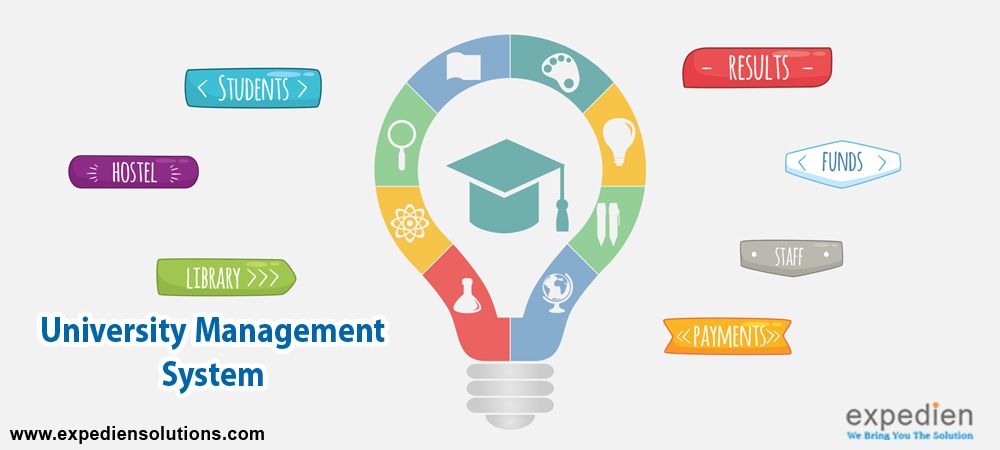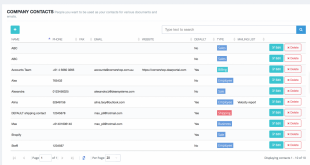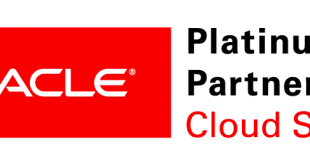University management systems are transformative tools that have revolutionized the way universities operate. These comprehensive software solutions provide a centralized platform for managing all aspects of university life, from student enrollment and academic records to financial management and human resources.
By streamlining administrative processes, university management systems free up valuable time and resources that can be redirected towards enhancing the student experience and fostering academic excellence.
University Management System Overview

A university management system (UMS) is a software application that helps universities manage their administrative and academic operations. UMSs can be used to automate a wide range of tasks, from student registration and course scheduling to financial management and human resources.
UMSs are typically composed of a number of different modules, each of which is responsible for a specific area of university operations. Common modules include:
- Student information system (SIS)
- Course management system (CMS)
- Financial management system (FMS)
- Human resources management system (HRMS)
- Library management system (LMS)
There are a number of different UMSs available on the market, each with its own strengths and weaknesses. Some of the most popular UMSs include:
- Banner
- PeopleSoft
- Workday
- SAP
- Oracle
The choice of which UMS to implement is a complex one, and there is no one-size-fits-all solution. Universities should carefully consider their own needs and requirements before making a decision.
Benefits of a University Management System
Implementing a university management system offers numerous advantages that can significantly enhance the efficiency and effectiveness of university operations. These benefits extend to various aspects of university administration, streamlining processes and improving the overall student experience.
One of the primary benefits of a university management system is its ability to streamline administrative processes. By automating tasks and centralizing data, the system eliminates the need for manual and repetitive tasks, saving time and reducing the risk of errors.
This efficiency allows administrators to focus on more strategic initiatives, such as improving student engagement and academic quality.
Impact on Student Success
A university management system also plays a crucial role in enhancing student success. By providing students with easy access to their academic records, course materials, and administrative services, the system empowers them to manage their academic journey effectively. Additionally, the system can generate personalized recommendations and track student progress, enabling early intervention and support for students who may be struggling.
Features of a University Management System
University management systems provide a comprehensive suite of features tailored to support the core functions of a university. These features streamline operations, enhance efficiency, and improve the overall management of academic and administrative processes.
Essential features of a university management system include:
Student Management
- Centralized student records management: Store and manage student information, including demographics, academic progress, enrollment details, and financial data.
- Course registration and scheduling: Allow students to register for courses, view schedules, and manage their academic journey.
- Grade tracking and reporting: Track student performance, calculate grades, and generate transcripts and reports.
Faculty Management
- Faculty profile management: Maintain faculty information, including expertise, research interests, and teaching assignments.
- Course management: Enable faculty to create and manage courses, assign assignments, and facilitate online learning.
- Research management: Track and manage research projects, publications, and grant applications.
Curriculum Management
- Course catalog management: Create and maintain a comprehensive course catalog, including course descriptions, prerequisites, and instructors.
- Program management: Define and manage academic programs, including degree requirements, course sequences, and graduation criteria.
- Curriculum planning: Facilitate curriculum planning and development, ensuring alignment with academic goals and industry standards.
Financial Management
- Tuition and fee management: Process tuition payments, manage student accounts, and generate invoices.
- Budgeting and forecasting: Create and manage university budgets, track expenses, and forecast financial performance.
- Payroll processing: Process faculty and staff salaries, manage benefits, and generate paychecks.
Administrative Management
- Human resources management: Manage employee records, track attendance, and facilitate payroll processing.
- Facilities management: Track and manage university facilities, including buildings, grounds, and equipment.
- Document management: Store and manage university documents, including policies, procedures, and meeting minutes.
Implementation of a University Management System
Implementing a university management system involves a series of crucial steps that require careful planning and execution. These steps encompass:
- Assessment and Planning:Conducting a thorough assessment of the university’s current processes and requirements, defining the system’s objectives, and developing a comprehensive implementation plan.
- Vendor Selection:Evaluating and selecting a suitable vendor based on their product capabilities, industry experience, and alignment with the university’s needs.
- System Configuration and Customization:Configuring the system to meet the specific requirements of the university, including data migration, process automation, and user interface customization.
- Training and User Adoption:Providing comprehensive training to users to ensure proficiency and adoption of the system, fostering a culture of system utilization and support.
- Data Migration and Integration:Migrating existing data from legacy systems or manual processes into the new system, ensuring data integrity and accessibility.
- Go-Live and Monitoring:Launching the system into production and closely monitoring its performance, addressing any issues or adjustments required for optimal functionality.
Challenges and Considerations
Implementing a university management system presents several challenges and considerations that need to be addressed:
- Change Management:Navigating the resistance to change and ensuring user buy-in, which is crucial for successful adoption and utilization of the system.
- Data Integrity:Ensuring the accuracy and completeness of data migrated from legacy systems or manual processes, as data quality is essential for effective decision-making.
- Interoperability:Integrating the system with other existing systems within the university, such as student information systems, financial systems, and learning management systems, to facilitate seamless data exchange and avoid data silos.
- Cost and Resources:Budgeting for the system’s acquisition, implementation, and ongoing maintenance, as well as allocating the necessary human resources for project management and user support.
- Security:Implementing robust security measures to protect sensitive student and university data, ensuring compliance with relevant regulations and safeguarding against unauthorized access or data breaches.
Best Practices for Successful Implementation
To ensure a successful implementation of a university management system, several best practices should be followed:
- Engage Stakeholders:Involving key stakeholders throughout the implementation process, including faculty, staff, students, and administrators, to gather their input and address their concerns.
- Establish a Clear Implementation Plan:Developing a detailed implementation plan that Artikels the project timeline, milestones, responsibilities, and communication channels to ensure a smooth and organized process.
- Provide Comprehensive Training:Offering tailored training sessions to users based on their roles and responsibilities, ensuring they are proficient in using the system and can leverage its capabilities effectively.
- Foster User Adoption:Encouraging user adoption through regular communication, support, and feedback mechanisms, promoting a positive perception of the system and its benefits.
- Monitor and Evaluate:Continuously monitoring the system’s performance and gathering feedback from users to identify areas for improvement and ensure ongoing alignment with the university’s evolving needs.
Integration with Other Systems

Integrating a university management system with other systems is crucial for streamlining university operations and enhancing efficiency. By connecting various systems, universities can automate processes, improve data sharing, and gain a comprehensive view of student and university data.
Integrating a university management system with other systems, such as student information systems, financial systems, and learning management systems, offers numerous benefits. It eliminates manual data entry, reduces errors, and ensures data consistency across different systems. Integration also enables universities to automate processes such as student registration, grade reporting, and financial transactions, freeing up staff for more strategic tasks.
Challenges of Integration
While integration offers significant benefits, it also presents certain challenges. These include:
- Data compatibility issues between different systems
- Security concerns and the need for robust data protection measures
- Technical complexities and the need for skilled IT staff
- Cost of integration and ongoing maintenance
Successful Integrations
Despite these challenges, many universities have successfully integrated their management systems with other systems. For example, the University of California, Berkeley, integrated its student information system with its financial system, resulting in improved efficiency and reduced costs. The University of Oxford integrated its learning management system with its student information system, enabling seamless access to course materials and grades for students.
Security and Data Management

Ensuring the security and integrity of data is crucial for a university management system. Robust security measures and data management strategies are essential to protect sensitive student and institutional information.
Security Measures, University management system
- Encryption:Data should be encrypted both at rest and in transit to prevent unauthorized access.
- Authentication and Authorization:Multi-factor authentication and role-based access controls restrict access to authorized users only.
- Network Security:Firewalls, intrusion detection systems, and anti-malware software protect against cyber threats.
- Vulnerability Management:Regular security audits and software updates address potential vulnerabilities.
- Incident Response Plan:A comprehensive plan Artikels procedures for responding to and mitigating security incidents.
Data Management Strategies
Data management strategies ensure data accuracy, integrity, and privacy.
- Data Backup and Recovery:Regular backups and disaster recovery plans protect against data loss.
- Data Integrity:Data validation and error handling prevent incorrect data entry and ensure data accuracy.
- Data Privacy:Compliance with data protection regulations, such as GDPR and FERPA, protects student and institutional privacy.
- Data Retention:Policies establish guidelines for data retention and disposal to ensure compliance and protect against data breaches.
Compliance and Industry Standards
University management systems must comply with relevant industry standards and regulations.
- ISO 27001:An international standard for information security management systems.
- FERPA (US):Protects the privacy of student educational records.
- GDPR (EU):Regulates the processing of personal data, including student information.
Emerging Trends in University Management Systems
The landscape of university management is undergoing a transformative shift, driven by the advent of innovative technologies and evolving educational paradigms. Several emerging trends are shaping the future of university management systems, redefining the way institutions operate and interact with students, faculty, and stakeholders.
These trends are not merely incremental changes but represent a fundamental shift in the way universities approach management and administration. By embracing these trends, universities can enhance efficiency, improve decision-making, and create a more engaging and personalized learning experience for students.
Cloud-Based Systems
- Cloud-based university management systems offer several advantages over traditional on-premise solutions. They provide greater flexibility, scalability, and cost-effectiveness, allowing universities to access their systems from anywhere with an internet connection.
- Cloud-based systems also enable universities to leverage advanced technologies such as artificial intelligence (AI) and machine learning (ML) to automate tasks, improve data analysis, and personalize the student experience.
Data Analytics and Business Intelligence
Data analytics and business intelligence are becoming increasingly important for universities to make informed decisions. By analyzing data from various sources, universities can gain insights into student performance, faculty productivity, and operational efficiency.
This data-driven approach enables universities to identify areas for improvement, optimize resource allocation, and enhance the overall effectiveness of their operations.
Mobile and Remote Access
The increasing use of mobile devices and the rise of remote learning have led to a growing demand for mobile and remote access to university management systems.
Mobile-friendly interfaces and remote access capabilities allow students, faculty, and staff to access the system from anywhere, at any time, using their smartphones, tablets, or laptops. This flexibility enhances convenience and improves the overall user experience.
Integration with Other Systems
Modern university management systems are designed to integrate with other software applications, such as student information systems (SIS), learning management systems (LMS), and financial management systems.
This integration enables universities to streamline processes, reduce data redundancy, and create a more cohesive and efficient ecosystem for managing all aspects of university operations.
Personalized Learning Experiences
Emerging technologies are enabling universities to create more personalized learning experiences for students. By leveraging AI and ML, universities can analyze student data to identify individual learning styles, strengths, and weaknesses.
This information can be used to tailor course content, provide personalized feedback, and create adaptive learning paths that cater to each student’s unique needs.
Final Summary
As universities navigate the ever-evolving landscape of higher education, university management systems will continue to play a pivotal role in driving efficiency, improving decision-making, and creating a more dynamic and engaging learning environment for students.
Originally posted 2024-05-20 11:55:24.
 Bussines News Daily
Bussines News Daily



